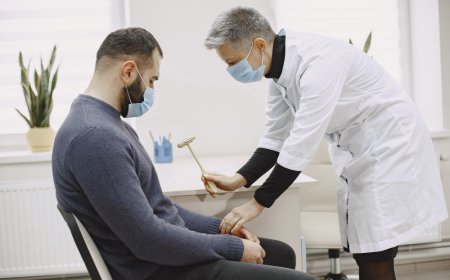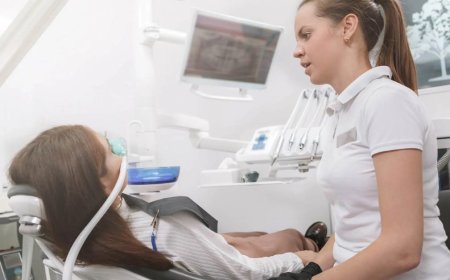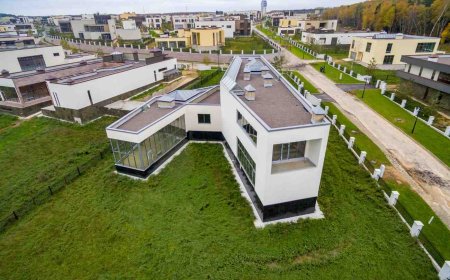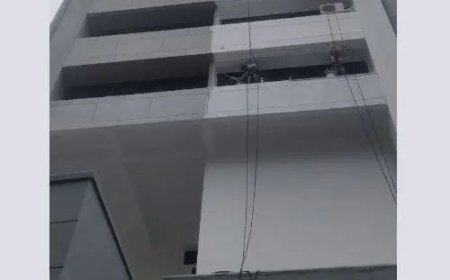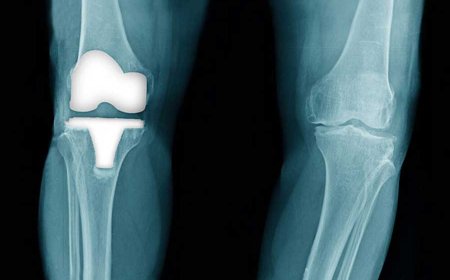Bone Fractures Acupuncture: Traditional Pain Relief
Bone fracture pain relief through acupuncture. Learn how this ancient practice complements modern treatment for faster healing and pain management.

Bone fractures represent one of the most challenging injuries to endure, often bringing intense pain that can persist for weeks or months during the healing process. While modern medicine offers excellent surgical techniques and pharmaceutical interventions, many patients seek complementary approaches to manage their pain and support recovery. Acupuncture, a cornerstone of Traditional Chinese Medicine (TCM) practiced for over 3,000 years, has emerged as a valuable adjunct therapy for bone fracture pain relief.
The integration of acupuncture with conventional fracture treatment represents a holistic approach that addresses not only the physical pain but also the emotional and energetic imbalances that can occur following traumatic injury. This ancient practice works by stimulating specific points along the body's meridian system, promoting natural healing processes and providing significant pain relief without the side effects often associated with long-term medication use.
Understanding how acupuncture can complement your bone fracture treatment plan is essential for making informed decisions about your recovery journey. This comprehensive guide explores the science behind acupuncture for bone fractures, its integration with modern pain management strategies, and what you can expect from this time-tested healing modality.
Prerequisites: Essential Knowledge Before Beginning Acupuncture Treatment
Before considering acupuncture as part of your bone fracture recovery plan, several important factors must be understood and addressed to ensure safe and effective treatment.
Medical Clearance and Coordination
The most critical prerequisite is obtaining proper medical clearance from your orthopedic specialist or primary care physician. Acupuncture should never replace conventional medical treatment for bone fractures but rather complement it. Your healthcare provider needs to assess the stability of your fracture, ensure proper healing is occurring, and determine if acupuncture is appropriate for your specific situation.
Understanding Your Fracture Type and Healing Stage
Different types of bone fractures require different approaches to acupuncture treatment. Simple fractures may respond well to acupuncture relatively early in the healing process, while complex or displaced fractures may require waiting until initial healing has begun. Understanding whether your fracture is in the inflammatory, reparative, or remodeling phase of healing helps determine the most appropriate acupuncture protocols.
Current Medications and Interactions
If you're taking prescription pain medications, including opioids like tapentadol hydrochloride 100mg, it's crucial to inform your acupuncturist about all medications and supplements you're using. While acupuncture is generally safe to combine with most medications, your practitioner needs this information to provide the most effective treatment and monitor for any potential interactions or changes in medication needs.
Setting Realistic Expectations
Acupuncture for bone fracture pain relief typically requires multiple sessions over several weeks or months. Unlike pharmaceutical interventions that may provide immediate relief, acupuncture works gradually to restore balance and promote healing. Understanding this timeline helps set appropriate expectations and ensures commitment to the treatment protocol.
Finding a Qualified Practitioner
Not all acupuncturists have specific training in treating bone fractures or working with orthopedic patients. Look for practitioners who are licensed, have experience with trauma recovery, and understand how to coordinate care with your medical team. Board certification and additional training in medical acupuncture or orthopedic conditions are valuable qualifications to seek.
The Science Behind Acupuncture for Bone Fractures
Traditional Chinese Medicine Perspective
In TCM theory, bone fractures represent a disruption of qi (vital energy) flow along the body's meridian channels. This disruption can lead to blood stasis, inflammation, and prolonged pain. Acupuncture works to restore proper qi circulation, reduce blood stasis, and support the body's natural healing mechanisms. The TCM approach views bone fractures not just as isolated injuries but as imbalances that affect the entire body system.
Modern Scientific Understanding
Contemporary research has revealed several mechanisms by which acupuncture provides pain relief and supports bone healing. These include:
Neurochemical Effects: Acupuncture stimulates the release of endorphins, the body's natural painkillers, while also affecting neurotransmitters like serotonin and dopamine that influence pain perception and mood.
Anti-inflammatory Response: Studies have shown that acupuncture can reduce inflammatory markers such as interleukin-1 and tumor necrosis factor-alpha, which are elevated following bone fractures and contribute to pain and delayed healing.
Improved Circulation: Acupuncture enhances blood flow to the injured area, bringing vital nutrients and oxygen necessary for bone repair while helping remove metabolic waste products that can impede healing.
Bone Formation Stimulation: Research indicates that acupuncture may stimulate osteoblast activity, the cells responsible for new bone formation, potentially accelerating the healing process.
Evidence-Based Research
Multiple clinical studies have demonstrated the effectiveness of acupuncture for bone fracture pain relief. A systematic review published in the Journal of Acupuncture and Meridian Studies found that patients receiving acupuncture alongside conventional treatment experienced significantly greater pain reduction and improved functional outcomes compared to those receiving conventional treatment alone.
Acupuncture Treatment Protocols for Bone Fractures
Initial Assessment and Treatment Planning
Your first acupuncture session will involve a comprehensive assessment that includes reviewing your medical history, examining the fracture site (when appropriate), and evaluating your overall health status. The acupuncturist will develop a personalized treatment plan based on TCM diagnosis principles and your specific healing needs.
Local and Distal Point Selection
Acupuncture treatment for bone fractures typically involves both local points near the injury site and distal points that support overall healing. Local points help address pain and inflammation directly, while distal points work to balance the body's energy and support systemic healing processes.
Treatment Frequency and Duration
Most patients benefit from acupuncture sessions 2-3 times per week during the acute phase of recovery, with sessions gradually reduced as healing progresses. A typical treatment course may last 8-12 weeks, though this varies based on fracture complexity and individual healing rates.
Adjunct Techniques
Many acupuncturists incorporate complementary techniques such as:
- Electroacupuncture: Uses mild electrical stimulation to enhance point effectiveness
- Moxibustion: Applies heat to acupuncture points to strengthen yang qi and support healing
- Cupping: Creates suction to improve local circulation and reduce muscle tension
- Tuina massage: Provides gentle manual therapy to support qi flow and reduce stiffness
Integrating Acupuncture with Conventional Pain Management
Complementary Approach to Medication
Acupuncture can be safely integrated with most conventional pain medications, including prescription opioids when necessary. Many patients find that acupuncture allows them to reduce their reliance on pain medications over time, though this should always be done under medical supervision.
Understanding Prescription Pain Management
For severe bone fracture pain, healthcare providers may prescribe medications like tapentadol hydrochloride 100mg. Tapentadol is a dual-action pain medication that combines opioid and non-opioid mechanisms to provide effective pain relief. It works by binding to opioid receptors while also inhibiting norepinephrine reuptake, offering pain relief through multiple pathways.
Important Considerations for Tapentadol Hydrochloride 100mg:
- Should only be used under strict medical supervision
- Dosing must be individualized based on pain severity and patient response
- Potential for physical dependence requires careful monitoring
- May interact with other medications, particularly those affecting the central nervous system
- Side effects can include nausea, dizziness, constipation, and drowsiness
- Should not be stopped abruptly after prolonged use
Synergistic Effects
Research suggests that acupuncture may enhance the effectiveness of pain medications while potentially reducing the doses needed for adequate pain control. This synergistic effect can be particularly beneficial for patients concerned about long-term medication use or those experiencing side effects from higher doses.
Monitoring and Adjustment
Regular communication between your acupuncturist and medical team is essential for optimizing your integrated treatment approach. As acupuncture begins to provide relief, your physician may be able to adjust medication dosages or explore tapering strategies when appropriate.
Benefits of Acupuncture for Bone Fracture Recovery
Pain Relief Without Side Effects
One of the primary advantages of acupuncture is its ability to provide significant pain relief without the side effects commonly associated with pain medications. This makes it particularly valuable for patients who cannot tolerate certain medications or wish to minimize their pharmaceutical use.
Enhanced Healing and Recovery
Beyond pain relief, acupuncture appears to support the actual healing process by improving circulation, reducing inflammation, and potentially stimulating bone formation. Many patients report faster return to normal activities when acupuncture is included in their treatment plan.
Improved Sleep and Mood
Chronic pain from bone fractures often disrupts sleep and can lead to anxiety or depression. Acupuncture's ability to promote relaxation and improve sleep quality can have profound effects on overall well-being and recovery outcomes.
Reduced Medication Dependence
For patients using opioid pain medications, acupuncture may provide a pathway to reduce dependence while maintaining adequate pain control. This is particularly important given the current understanding of opioid-related risks.
Holistic Support
Acupuncture addresses not just the physical symptoms but also the emotional and energetic imbalances that can occur following traumatic injury. This holistic approach supports overall resilience and recovery.
Safety Considerations and Contraindications
General Safety Profile
Acupuncture is generally considered safe when performed by licensed practitioners using sterile techniques. Serious adverse events are rare, with the most common side effects being mild bruising or temporary soreness at needle sites.
Specific Contraindications for Fracture Patients
Certain conditions may make acupuncture inappropriate or require special precautions:
- Active infection at or near the fracture site
- Severe bleeding disorders or anticoagulant use
- Unstable fractures that require complete immobilization
- Certain types of spinal fractures
- Pregnancy (some acupuncture points are contraindicated)
Coordination with Medical Care
Never use acupuncture as a substitute for emergency medical care or essential conventional treatments. Always inform your medical team about acupuncture treatments and ensure proper coordination of care.
What to Expect During Acupuncture Treatment
Your First Session
Initial acupuncture sessions typically last 60-90 minutes and include comprehensive health assessment, treatment planning, and the first acupuncture treatment. Your practitioner will explain the process, answer questions, and ensure you're comfortable throughout.
Needle Insertion and Sensation
Most patients are surprised by how comfortable acupuncture can be. Needles are much thinner than those used for injections, and insertion is typically painless. You may feel a mild tingling, heaviness, or warmth at the needle sites, which indicates proper stimulation.
During Treatment
Once needles are inserted, you'll rest quietly for 20-30 minutes while the acupuncture works. Many patients find this time deeply relaxing and may even fall asleep. Your practitioner will check on you periodically and may adjust needles as needed.
Post-Treatment Response
Some patients experience immediate pain relief, while others notice gradual improvements over several sessions. It's not uncommon to feel relaxed or slightly tired after treatment, and some patients experience temporary soreness or emotional release.
Frequently Asked Questions
Q: Is acupuncture safe to use alongside prescription pain medications like tapentadol?
A: Generally yes, acupuncture is safe to combine with most prescription pain medications, including tapentadol hydrochloride 100mg. However, you must inform both your prescribing physician and acupuncturist about all medications you're taking. As acupuncture may enhance pain relief, your doctor might need to adjust medication dosages over time. Never change prescription medications without medical supervision.
Q: How quickly can I expect pain relief from acupuncture for my bone fracture?
A: Response times vary significantly between individuals. Some patients experience immediate relief during or immediately after their first session, while others notice gradual improvements over 3-6 sessions. For bone fracture pain, most patients begin experiencing meaningful relief within 2-4 weeks of regular treatment, with continued improvement over 8-12 weeks.
Q: Can acupuncture actually help my bone heal faster?
A: Research suggests that acupuncture may support the bone healing process by improving circulation, reducing inflammation, and potentially stimulating bone-forming cells. While it's not a substitute for proper medical treatment, many patients report faster return to normal activities when acupuncture is included in their recovery plan.
Q: Are there any bone fracture types that shouldn't be treated with acupuncture?
A: Acupuncture is generally safe for most bone fractures, but certain conditions require special caution or may be contraindicated. These include unstable fractures requiring complete immobilization, active infections, severe bleeding disorders, and certain spinal fractures. Your acupuncturist will assess your specific situation and coordinate with your medical team.
Q: How many acupuncture sessions will I need for my bone fracture?
A: Treatment duration depends on factors like fracture severity, your overall health, and how well you respond to acupuncture. Most patients benefit from 2-3 sessions per week for 8-12 weeks, though some may need longer treatment. Your acupuncturist will adjust the treatment plan based on your progress.
Q: Will acupuncture hurt, especially with a bone fracture?
A: Acupuncture needles are much thinner than medical needles and insertion is typically painless. Most patients are surprised by how comfortable the treatment is. Your acupuncturist will work carefully around your injury and adjust techniques as needed to ensure comfort throughout treatment.
Q: Can I use acupuncture instead of pain medications for my bone fracture?
A: This depends on your pain level and fracture severity. While acupuncture provides significant pain relief for many patients, severe fracture pain may require medication, especially initially. Many patients find that acupuncture allows them to reduce medication use over time, but this should always be done under medical supervision.
Q: Does insurance cover acupuncture for bone fracture treatment?
A: Insurance coverage varies significantly. Some plans cover acupuncture for pain management, while others do not. Check with your insurance provider about coverage for acupuncture as part of fracture treatment. Many patients find the investment worthwhile even when paying out-of-pocket.
Q: Are there any side effects from acupuncture I should be aware of?
A: Acupuncture is generally very safe with minimal side effects. The most common are mild bruising or temporary soreness at needle sites. Some patients feel relaxed or slightly tired after treatment. Serious side effects are extremely rare when treatment is performed by licensed practitioners.
Q: Can acupuncture help with the emotional stress of having a bone fracture?
A: Yes, acupuncture can be very helpful for managing the emotional aspects of injury and recovery. Many patients report improved mood, better sleep, and reduced anxiety with regular acupuncture treatment. The relaxation response triggered by acupuncture can significantly improve overall well-being during recovery.
Q: When should I start acupuncture after my bone fracture?
A: The optimal timing depends on your specific fracture and treatment plan. For stable fractures, acupuncture can often begin within days of injury. For complex fractures or those requiring surgery, it's usually best to wait until initial healing has begun. Always get clearance from your orthopedic specialist before starting acupuncture.
Q: How do I find a qualified acupuncturist for bone fracture treatment?
A: Look for licensed acupuncturists with experience treating orthopedic conditions. Board certification, additional training in medical acupuncture, and experience working with fracture patients are valuable qualifications. Ask for referrals from your healthcare provider or check with professional acupuncture organizations.




